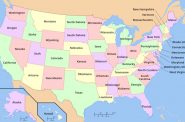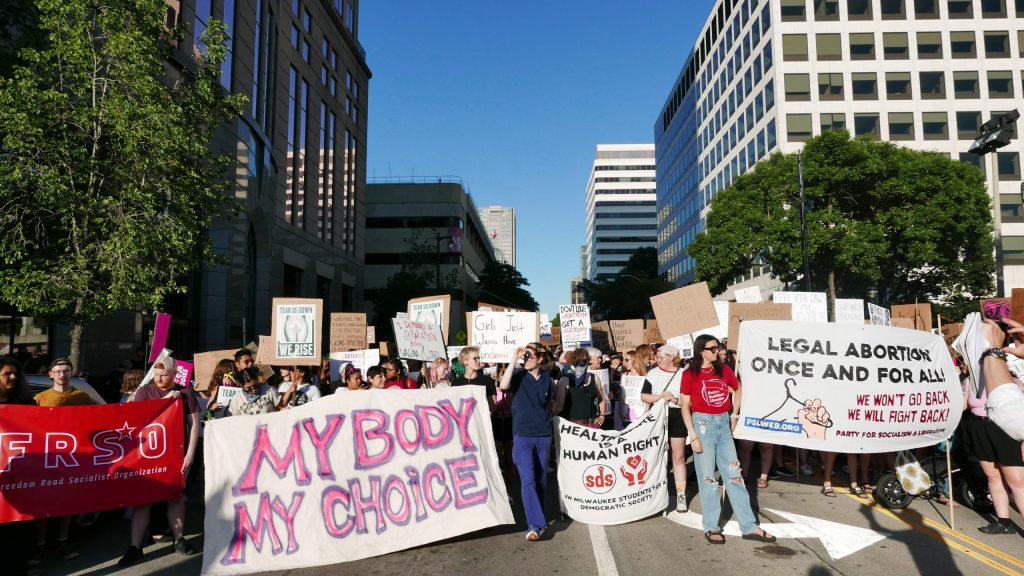Abortion, Public Opinion and Court Rulings
Recent decision by Wisconsin Supreme Court raises questions.
The recent decision by the Wisconsin Supreme Court to legalize abortions was approved by a 4-3 majority with retiring justice Ann Walsh Bradley voting with the majority. Had conservative candidate Brad Schimel won the April election to succeed her, the court would have swung to a 4-3 conservative majority and might well have decided to eventually overrule the decision. The victory of liberal Susan Crawford, however, has preserved a 4-3 liberal majority.
All of which might suggest voters are closely divided on the issue of abortion. What do the polls show on this? Since 2012, the Marquette Law School Poll of registered voters has asked “Do you think abortion should be legal in all cases, legal in most cases, illegal in most cases, or illegal in all cases?
The next two bands show the percentage saying abortion should be illegal in most cases (27% most recently, in yellow) and in all cases (9%, in red). Combining these two gives 36% who think it should be illegal in all or most cases.
The most striking aspect of this history is how little attitudes have changed over time. That said, there does seem to be some shrinkage in the number who say it should be illegal in all cases. Also, the number of voters refusing to answer or saying they don’t know—the white space below the dotted line at the top of the graph—has dropped from very small to zero, perhaps reflecting the recent attention to the controversy about abortion and the increase in intense partisanship.
In 2023 and 2024, following the United States Supreme Court’s decision to overturn Roe v. Wade, thus striking down the 1973 decision that made abortion legal in all 50 states, registered voters were asked whether they favored (in red) or opposed the decision (in green). The next graph shows the results for Republicans, Independents, and Democrats. Notably, a substantial minority of Republicans (30%) opposed the decision, while Democrats overwhelmingly opposed it. Independents were twice as likely to be opposed than those who were favorable to the court’s ruling.
What role does religion play in support or opposition to overturning Roe v. Wade? The next graph shows the self-declared religious preferences of the post-Dobbs polling sample:
Members of this panel were asked whether or not they favored the US Supreme Court’s overturning of Roe. Of the three groups, the only one favoring the reversal was made up of self-described born-again Protestants—which was not unexpected. More surprising, considering the historic, anti-abortion position of the Catholic hierarchy, was the strong support for Roe among Catholics in the sample.
The next graph further explores the connection between religion and support or opposition to overturning Roe. Respondents were asked how often they attended a religious service. As church attendance goes up, support for Roe goes down.
In poll after poll, Wisconsin voters have consistently rejected a regime in which the state decides for whom and when abortions are possible, rather than leaving that to a patient and her support group. The state’s voters are also not enthusiastic about religious organizations commandeering the government to enforce their beliefs.
Is there something unique about Wisconsin and its voters on this issue? Surveys by the Pew Research Center suggest that support for legalized abortion is at least as strong nationally as in Wisconsin. For example, Pew reports that 41% of Republicans and Independents who lean Republican say that abortion should be legal in all or most cases.
Other findings by Pew also closely match the Wisconsin results. Among religions, only white evangelical protestants say that abortion should be illegal in all or most cases. Pew reports that:
While public support for legal abortion has fluctuated somewhat in two decades of polling, it has remained relatively stable over the past several years. Currently, 63% say abortion should be legal in all or most cases, while 36% say it should be illegal in all or most cases.
Wisconsin Senator Ron Johnson has advocated that Wisconsin hold a referendum on abortion. Voter initiated referenda are not legal in Wisconsin, but the Legislature could initiate an amendment to the Wisconsin Constitution which, if passed, would go to a referendum. Alternatively, the Legislature could initiate an advisory referendum. Not surprisingly, the Republican legislative leadership has shown no interest in either of these. They know what the response would be.
Inadvertently, Wisconsin Supreme Court Justice Brian Hagedorn, who dissented from the decision affirming the right to abortion, identified the problem with a minority trying to force its views on the majority:
The constitution recognizes that it is the people, through their representatives in the state legislature, who have the power to decide what laws should govern them.
It is clear from polling, and the outcome of at least two elections for the state Supreme Court, that Wisconsinites don’t want a regime that makes abortion illegal. Why, then, has the state Legislature done such a poor job of representing the people on this issue? Certainly, 14 years of gerrymandering was part of the explanation. Also, the Republican primary serves to eliminate any potential Republican who believes abortion should be available from running for office.
Given that, what recourse do the people have if the Court refuses to act? The answer is none. That 4-3 decision was a momentous one.
If you think stories like this are important, become a member of Urban Milwaukee and help support real, independent journalism. Plus you get some cool added benefits.
Data Wonk
-
Life Expectancy in Wisconsin vs. Other States
 Dec 10th, 2025 by Bruce Thompson
Dec 10th, 2025 by Bruce Thompson
-
How Republicans Opened the Door To Redistricting
 Nov 26th, 2025 by Bruce Thompson
Nov 26th, 2025 by Bruce Thompson
-
The Connection Between Life Expectancy, Poverty and Partisanship
 Nov 21st, 2025 by Bruce Thompson
Nov 21st, 2025 by Bruce Thompson


























